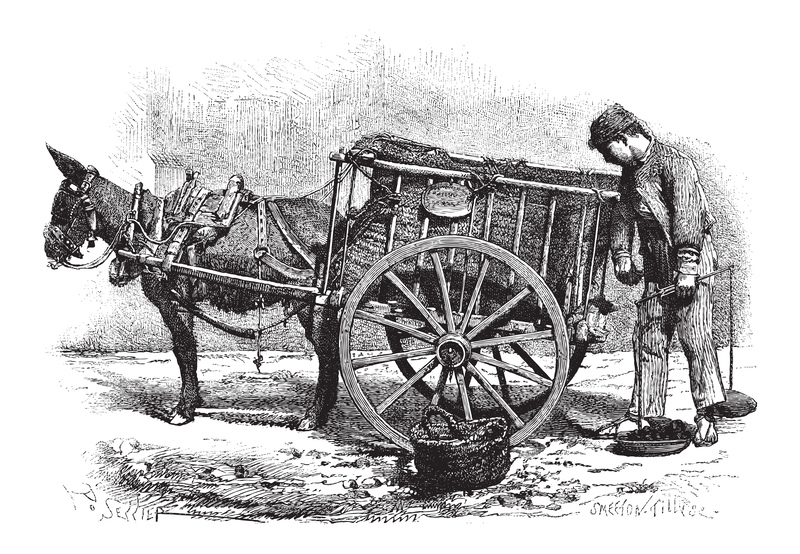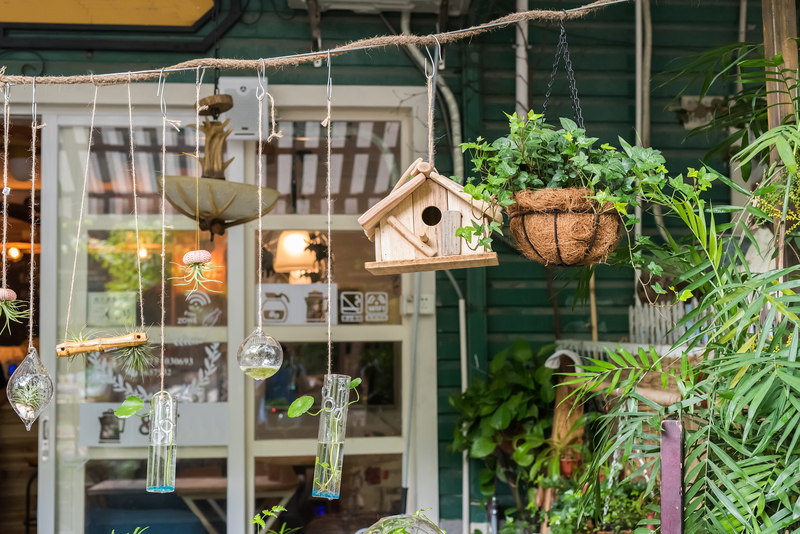Microplastic Solutions: Can They Stop Environmental Harm?
Microplastics have become a pressing global issue, sparking concern among scientists, policymakers, and the general public. These tiny plastic particles--less than 5mm in size--are now found everywhere from the deepest ocean trenches to Arctic snow and even in the air we breathe. But what are the best microplastic solutions? And more importantly, can they truly halt or mitigate the environmental harm caused by these pervasive pollutants? In this comprehensive article, we will explore the latest microplastic removal strategies, prevention measures, technological innovations, and community initiatives striving to curb microplastic pollution.

What Are Microplastics?
Before we dig into the solutions, it is crucial to understand what microplastics are and why they present such a grave threat to environmental and human health. Microplastics come from a variety of sources:
- Primary microplastics: Manufactured to be small (e.g., microbeads in cosmetics, industrial pellets).
- Secondary microplastics: Result from the breakdown of larger plastic items due to sunlight, heat, or mechanical wear (plastic bags, bottles, fishing gear).
These particulates are ubiquitous contaminants, infiltrating waterways, marine ecosystems, soils, and even the food chain. Their persistence and ability to absorb toxic chemicals make them particularly hazardous.
The Environmental Impact of Microplastics
The environmental harm caused by microplastics is multifaceted:
- They are ingested by marine and terrestrial animals, leading to physical harm, chemical exposure, behavioral disruption, and population decline.
- Microplastics act as vectors for hazardous chemicals and pathogens, increasing the risk of ecosystem contamination.
- They disrupt nutrient cycles and soil health, affecting agricultural productivity and food safety.
- Microplastics can even affect atmospheric processes, found in rain, snow, and even remote mountain regions.
In light of this, finding effective microplastic removal and prevention solutions has become a top priority for scientists and environmental advocates worldwide.
Microplastic Solutions: Current Approaches
1. Prevention: Stopping Microplastics at the Source
One of the most effective strategies against microplastic pollution is prevention. Several measures have been implemented or proposed globally:
- Ban on Microbeads: Many countries have banned the use of microbeads in cosmetics and personal care products.
- Regulation of Industrial Pellets: Stricter controls on the handling and transport of plastic pellets have been introduced to prevent spillage.
- Improved Product Design: Encouraging manufacturers to produce textiles and plastics that shed fewer microfibers and degrade more safely.
- Consumer Awareness Campaigns: Educating the public to reduce plastic consumption, opt for natural fabrics, and participate in proper waste sorting.
Prevention remains the most cost-effective microplastic pollution solution, aligned with the adage 'an ounce of prevention is worth a pound of cure'.
2. Wastewater Treatment Upgrades
A significant portion of microplastics enter rivers and oceans via untreated or inadequately treated wastewater. Upgrading wastewater treatment facilities can:
- Include advanced filtration and membrane technology to capture microscopic particles.
- Install tertiary treatment processes such as dissolved air flotation, sand filtration, and activated carbon.
- Develop magnetic purification systems where magnetized nanoparticles bind to microplastics for easy removal.
These technological enhancements are proving effective, with leading-edge plants already capturing up to 99% of microplastics from effluent before it reaches natural waterways.
3. Innovative Filtration Technologies
Beyond municipal wastewater solutions, household and industrial filtration systems are being developed:
- Washing machine filters: Devices installed in washing machines can trap microfibers shed from clothing before they leave the home.
- Stormwater runoff filters: Systems placed in drains and urban run-off channels to catch microplastics at their source.
- Portable water purification devices utilizing nanomaterials or bio-inspired membranes that block or trap micro-plastics.
Brands and local governments in Europe, Japan, and Australia are piloting such technologies with promising results.
Emerging Microplastic Solutions
4. Nature-Based and Community-Led Approaches
Nature sometimes offers the best answers. Several nature-based microplastic solutions are gaining attention:
- Wetland and Riparian Buffer Zones: Constructed or preserved wetlands can trap sediment and microplastics before they reach larger water bodies.
- Mussel and Oyster Reefs: Filter-feeding species like mussels and oysters naturally remove particulates (including microplastics) from the water. Pilot projects are underway in the UK and North America, exploring their use in environmental clean-up efforts.
- Community river clean-up operations involving manual removal and smart booms--floating barriers that capture plastics for collection near river mouths.
These methods not only remove existing microplastics but also restore habitats and offer educational opportunities.
5. Biodegradable and Alternative Materials
A long-term microplastic pollution solution involves moving away from conventional plastics:
- Bioplastics: Plastics made from corn starch, cellulose, seaweed, or other natural materials, designed to break down more safely in the environment.
- Textile innovations: Fabrics that are shed-resistant or made from plant fibers that biodegrade harmlessly.
- Encouragement of packaging redesign, eliminating single-use plastics where possible.
*However, it's important to note that not all biodegradable plastics break down easily in every environment; thorough evaluation and labeling are essential for these solutions to be effective.
6. Advanced Cleanup and Detection Technologies
- Automated ocean skimmers and river barrier systems that scoop up floating plastic debris, including microplastic aggregates.
- AI-powered detection tools: Artificial intelligence algorithms that scan for and identify concentrations of microplastics, enabling targeted clean-up operations.
- Satellite and drone monitoring for real-time mapping of global plastic pollution hotspots.
These cutting-edge innovations help scientists track microplastics and refine their removal efforts for maximal impact.
Policy, Legislation, and Industry Responsibility
While technological innovation is vital, stopping environmental harm from microplastics also requires robust policy and legislative action. Leading microplastic solutions are being propelled by:
- International treaties: Negotiations are underway to create a global plastic pollution treaty with enforceable rules.
- Corporate accountability: Extended Producer Responsibility (EPR) policies force manufacturers to finance recycling, clean-up, and research of plastic alternatives.
- National bans, taxes, and incentives to reduce plastic production, consumption, and waste exportation.
Such policies foster a shift towards a circular economy, where products are designed to be reused, repaired, and recycled, minimizing the risk of microplastics entering the environment.
Challenges and Limitations in Microplastic Solutions
Despite the progress, *microplastic solutions* face a range of challenges:
- Scale: The sheer volume of microplastics already present globally makes complete clean-up daunting.
- Detection Difficulties: Micro- and nanoplastics are hard to quantify and remove due to their small size and diverse composition.
- Limited Biodegradable Options: Many alternatives to conventional plastics do not break down effectively in natural environments.
- Cost: High-tech filtration and clean-up systems can be expensive to install and maintain, particularly in developing countries.
- Lag in Regulation: Legislation often lags behind scientific developments and may be weakly enforced.
Therefore, success will likely depend on a multi-faceted approach: combining prevention, innovation, regulation, and community action.
The Role of Individuals and Communities
Every person can become part of the solution. Here are some *simple but effective microplastic reduction actions* for individuals and local communities:
- Opt for products with minimal or no plastic packaging.
- Choose natural fabrics and install washing machine filters where possible.
- Avoid cosmetics containing microbeads and support brands promoting sustainable materials.
- Participate in or organize local clean-ups of rivers, lakes, and beaches.
- Advocate for tougher local and national laws on plastic production and pollution.
Collective small actions can add up to meaningful change in the fight against microplastic pollution.
Future Prospects for Microplastic Solutions
The future of microplastic pollution solutions is rapidly evolving, fueled by innovation and collaboration across scientific disciplines and industries. Promising trends include:
- Integration of machine learning and robotics for targeted clean-up.
- Expansion of eco-design principles in manufacturing to minimize microplastic shedding.
- Stronger international legal frameworks holding polluters accountable.
- Advancements in biodegradable materials and large-scale recycling infrastructure.
- Continued investment in public engagement and environmental education.
These integrated strategies offer hope that we can not only stop but potentially reverse the environmental harm caused by microplastics.

Conclusion: Can Microplastic Solutions Stop Environmental Harm?
Microplastic pollution is one of the most complex and pervasive environmental challenges of our time. But the possibilities for mitigation and prevention have never been greater. Through a combination of prevention, technological innovation, nature-based interventions, and robust public policy, the worst effects of microplastics can be significantly reduced--even if total eradication remains a distant goal.
The ultimate *microplastic solution* lies in systemic change: redesigning our societies to reduce plastic dependency, holding manufacturers accountable, supporting scientific breakthroughs, and empowering communities. When governments, businesses, scientists, and citizens work in concert, stopping environmental harm from microplastics becomes an achievable--if ambitious--goal.
Now is the time to act. Every piece of microplastic kept from the environment is a step toward a cleaner, healthier, and more sustainable future.
Frequently Asked Questions on Microplastic Solutions
- What is the most effective microplastic solution?
Currently, prevention--by reducing plastic production and use at the source--is considered the most effective strategy. - Can microplastics be removed from oceans and rivers completely?
Removing all microplastics is extremely challenging, but a combination of filtration technologies and natural solutions can make a significant impact. - Are biodegradable plastics a guaranteed solution?
Only if designed to degrade under real-world environmental conditions; otherwise, they may still contribute to microplastic pollution. - How can individuals help?
Reduce personal plastic use, support sustainable brands, participate in local clean-ups, and advocate for strong environmental policies. - What role should industries play?
Redesigning products to shed fewer microplastics, investing in cleaner production, and participating in extended producer responsibility programs.